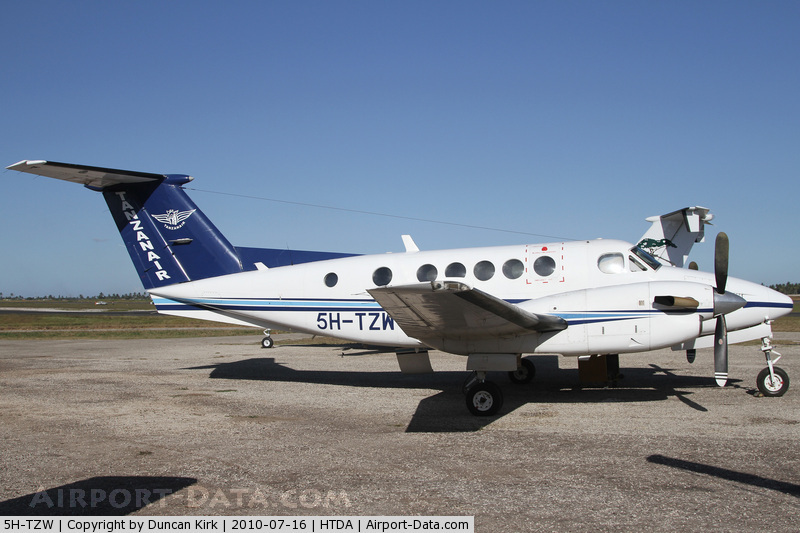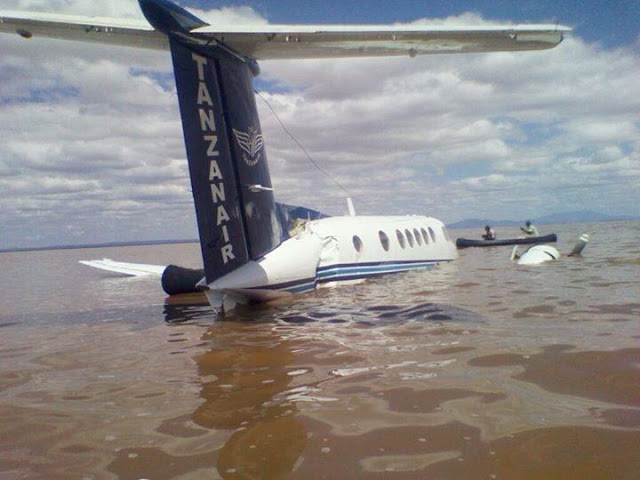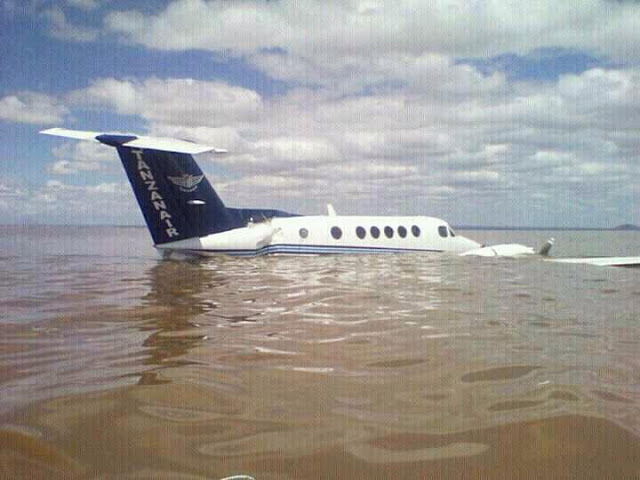Country
Crash of a Beechcraft B200 Super King Air in Wichita: 4 killed
Date & Time:
Oct 30, 2014 at 0948 LT
Registration:
N52SZ
Survivors:
No
Schedule:
Wichita – Mena
MSN:
BB-1686
YOM:
1999
Crew on board:
1
Crew fatalities:
Pax on board:
0
Pax fatalities:
Other fatalities:
Total fatalities:
4
Aircraft flight hours:
6314
Aircraft flight cycles:
7257
Circumstances:
The airline transport pilot was departing for a repositioning flight. During the initial climb, the pilot declared an emergency and stated that the airplane "lost the left engine." The airplane climbed to about 120 ft above ground level, and witnesses reported seeing it in a left turn with the landing gear extended. The airplane continued turning left and descended into a building on the airfield. A postimpact fired ensued and consumed a majority of the airplane. Postaccident examinations of the airplane, engines, and propellers did not reveal any anomalies that would have precluded normal operation. Neither propeller was feathered before impact. Both engines exhibited multiple internal damage signatures consistent with engine operation at impact. Engine performance calculations using the preimpact propeller blade angles (derived from witness marks on the preload plates) and sound spectrum analysis revealed that the left engine was likely producing low to moderate power and that the right engine was likely producing moderate to high power when the airplane struck the building. A sudden, uncommanded engine power loss without flameout can result from a fuel control unit failure or a loose compressor discharge pressure (P3) line; thermal damage prevented a full assessment of the fuel control units and P3 lines. Although the left engine was producing some power at the time of the accident, the investigation could not rule out the possibility that a sudden left engine power loss, consistent with the pilot's report, occurred. A sideslip thrust and rudder study determined that, during the last second of the flight, the airplane had a nose-left sideslip angle of 29°. It is likely that the pilot applied substantial left rudder input at the end of the flight. Because the airplane's rudder boost system was destroyed, the investigation could not determine if the system was on or working properly during the accident flight. Based on the available evidence, it is likely that the pilot failed to maintain lateral control of the airplane after he reported a problem with the left engine. The evidence also indicates that the pilot did not follow the emergency procedures for an engine failure during takeoff, which included retracting the landing gear and feathering the propeller. Although the pilot had a history of anxiety and depression, which he was treating with medication that he had not reported to the Federal Aviation Administration, analysis of the pilot's autopsy and medical records found no evidence suggesting that either his medical conditions or the drugs he was taking to treat them contributed to his inability to safely control the airplane in an emergency situation.
Probable cause:
The pilot's failure to maintain lateral control of the airplane after a reduction in left engine power and his application of inappropriate rudder input. Contributing to the accident was the pilot's failure to follow the emergency procedures for an engine failure during takeoff. Also contributing to the accident was the left engine power reduction for reasons that could not be determined because a postaccident examination did not reveal any anomalies that would have precluded normal operation and thermal damage precluded a complete examination.
Final Report:
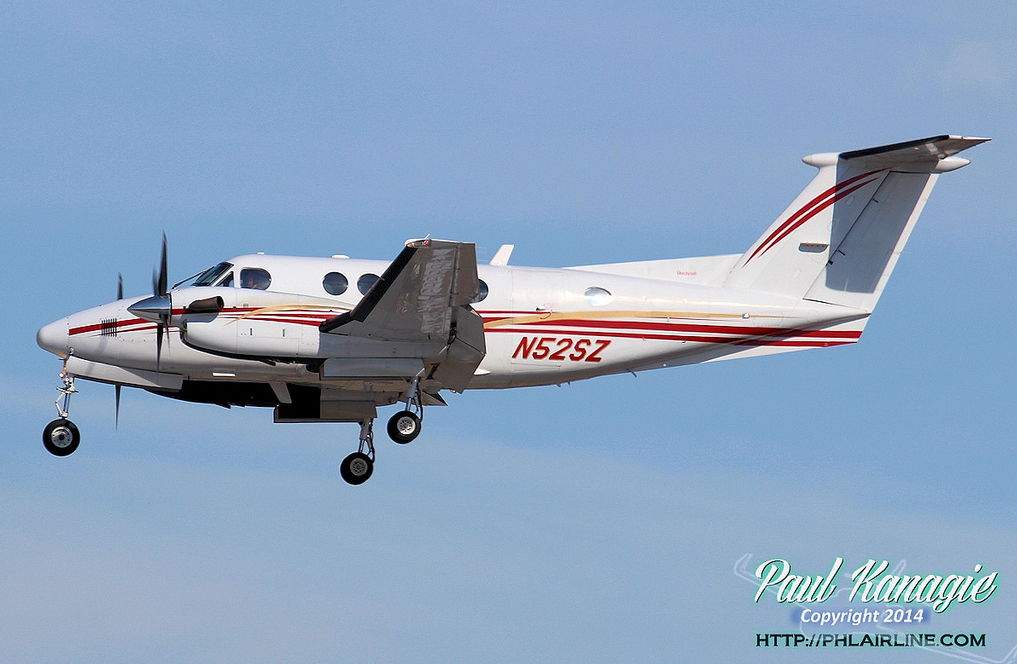
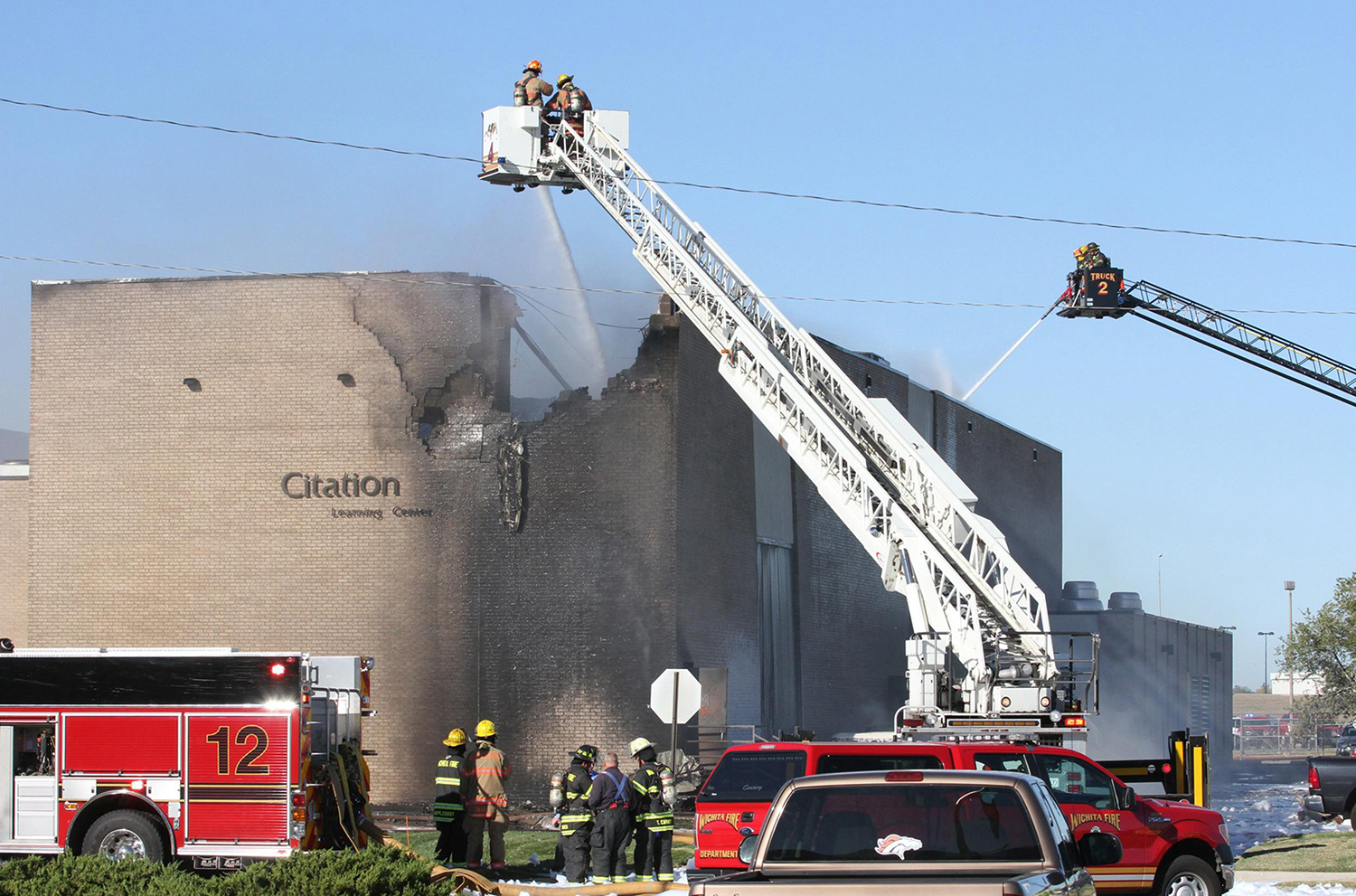

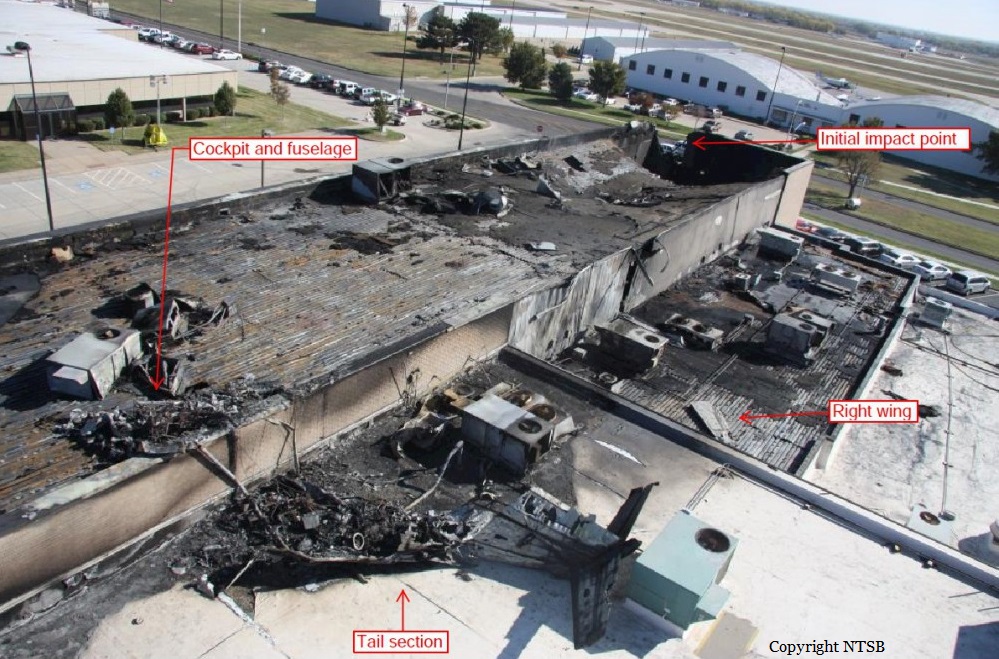
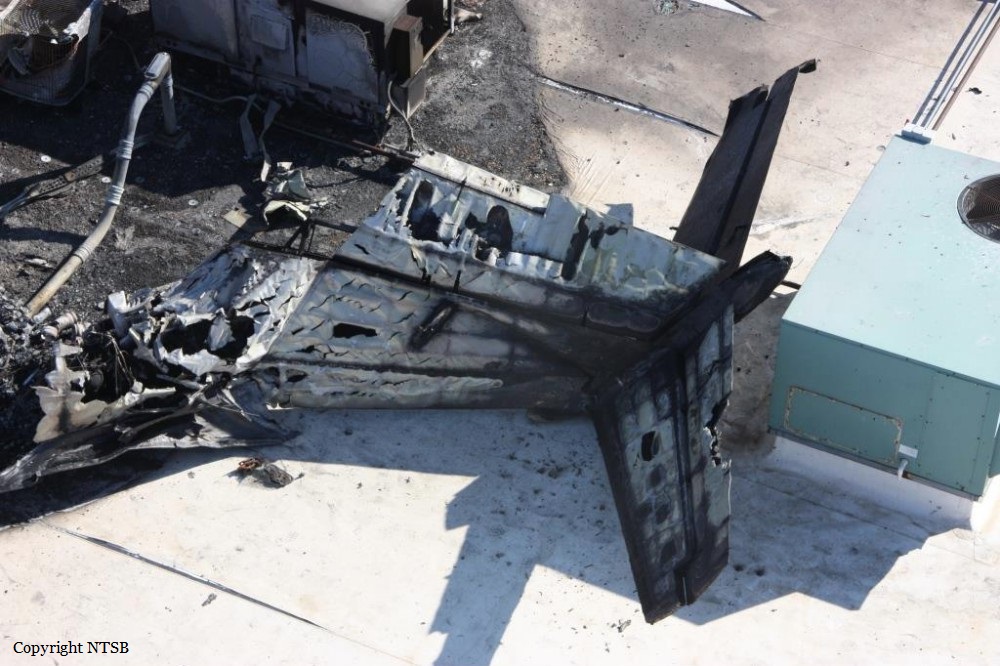
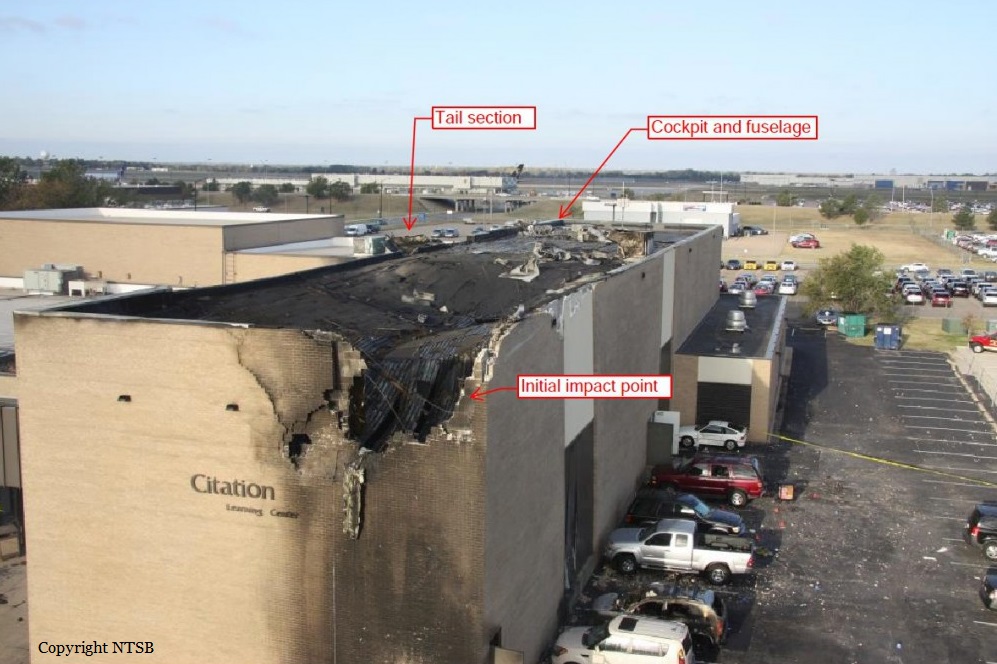

Crash of a Beechcraft 200C Super King Air in Nouméa
Date & Time:
Sep 9, 2014 at 1150 LT
Registration:
F-GRSO
Survivors:
Yes
Schedule:
Lifou – Nouméa
MSN:
BL-11
YOM:
1980
Crew on board:
2
Crew fatalities:
Pax on board:
2
Pax fatalities:
Other fatalities:
Total fatalities:
0
Circumstances:
The twin engine airplane departed Lifou Airport on an ambulance flight to Nouméa-Magenta Airport, carrying two passengers and two pilots. On approach to Magenta Airport, the crew followed the checklist and lower the landing gears. As all three green light failed to came on the cockpit panel, the crew elected to lower the gears manually without success. The crew completed two low passes in front of the control tower and it was confirmed that the left main gear seems to be down but not locked. After a 45-minute flight to burn fuel, the crew completed the landing. Upon touchdown, both main landing gear collapsed while the nose gear remained extended. The aircraft slid for few dozen metres before coming to rest. All four occupants evacuated safely and the aircraft was damaged beyond repair.
Probable cause:
The rupture of two teeth of the sprocket of the control cylinder of the left main landing gear caused the cylinder to be locked and thus caused the mechanical system to extend the landing gear. This blockage prevented the complete extension and locking of the landing gear. This rupture and other damage to the two main landing gear actuators was probably the result of improper installation of the toothed gear and / or improper adjustment of the assembly.
Final Report:
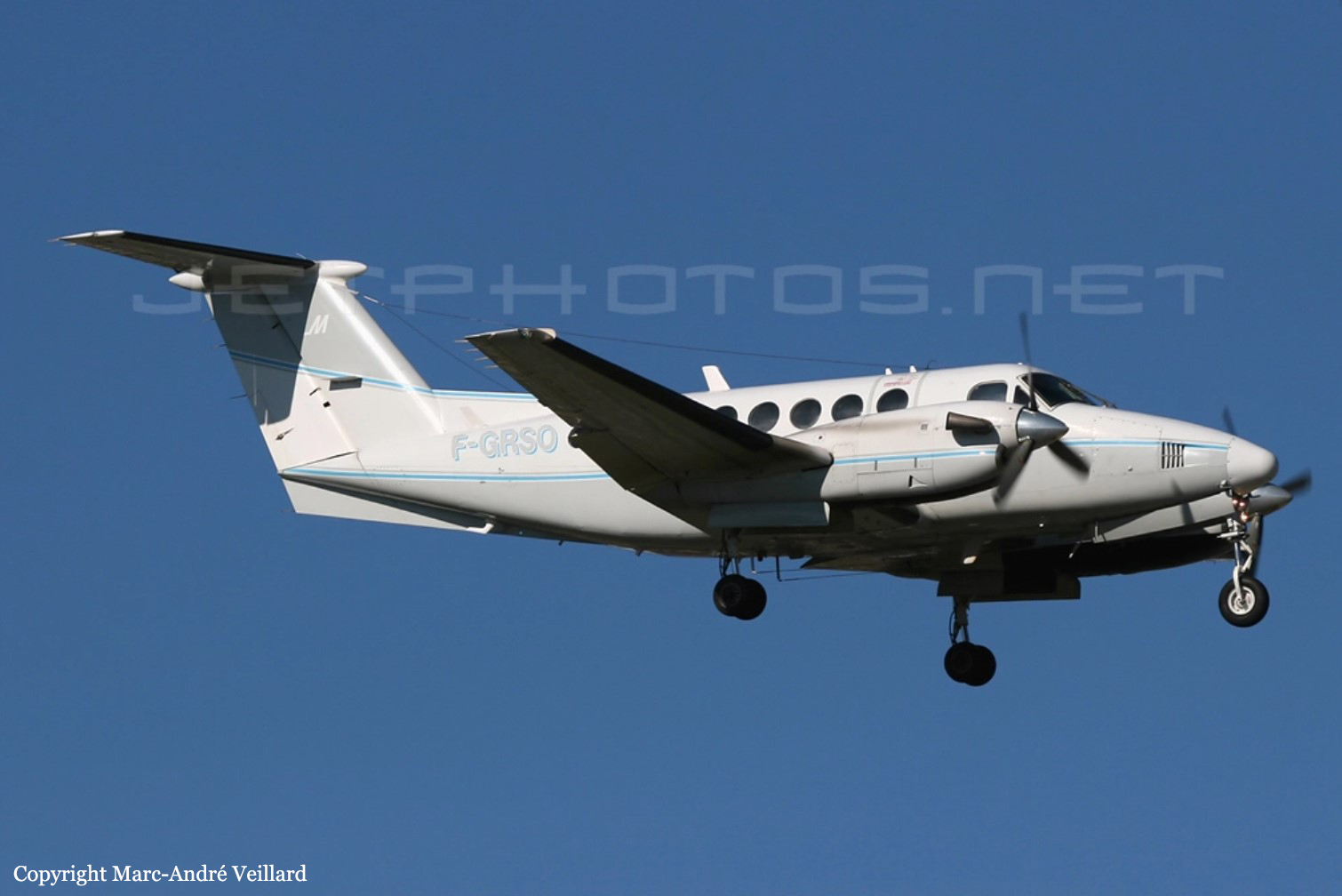
Crash of a Beechcraft B200 Super King Air in Bahía Solano
Date & Time:
Jun 2, 2014 at 1700 LT
Registration:
PNC-0225
Survivors:
Yes
MSN:
BB-1644
YOM:
1998
Crew on board:
2
Crew fatalities:
Pax on board:
1
Pax fatalities:
Other fatalities:
Total fatalities:
0
Circumstances:
Shortly after takeoff from Bahía Solano-José Celestino Mutis Airport, while in initial climb, the crew encountered engine problems. The captain attempted an emergency landing in a prairie. The aircraft landed gear up and slid for few dozen metres before coming to rest. While all three occupants escaped with minor injuries, the aircraft was damaged beyond repair.

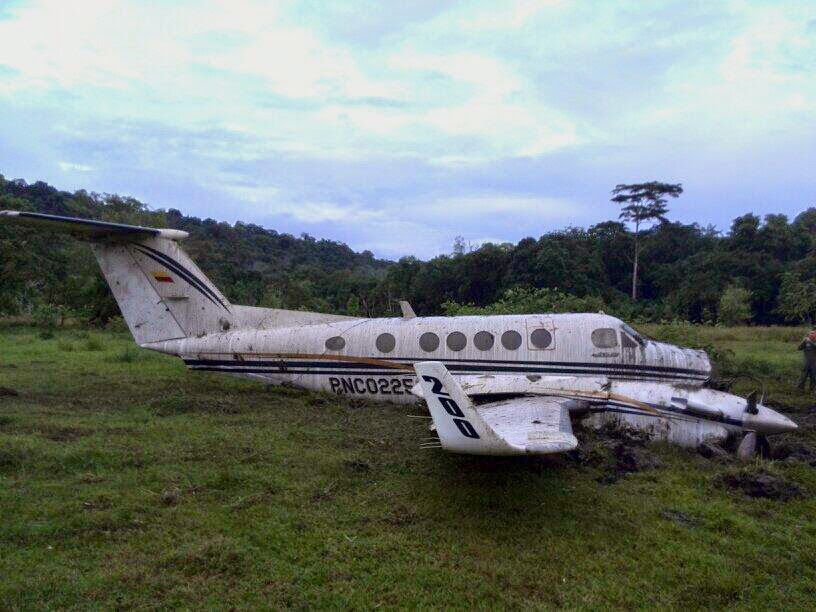
Crash of a Beechcraft B200 Super King Air near Carmelo: 5 killed
Date & Time:
May 27, 2014 at 1240 LT
Registration:
LV-CNT
Survivors:
Yes
Schedule:
San Fernando - Carmelo
MSN:
BB-1367
YOM:
1990
Crew on board:
1
Crew fatalities:
Pax on board:
8
Pax fatalities:
Other fatalities:
Total fatalities:
5
Captain / Total hours on type:
478.00
Aircraft flight hours:
4616
Aircraft flight cycles:
4490
Circumstances:
Owned by Grupo Kowzef (Federico Alejandro Bonomi), the twin engine aircraft departed San Fernando (Buenos Aires) at 1222LT on an executive flight to Carmelo, Uruguay. On approach to Carmelo-Zagarzazú Airport runway 35, the pilot encountered marginal weather conditions and initiated a go-around procedure. Few minutes later, he attempted a second approach under VFR mode. While completing a slight turn to the left in descent, the aircraft impacted the surface of the Río de la Plata and came to rest in shallow water some 10 km southwest of Carmelo Airport. The pilot and four passengers were killed and four other occupants were injured. The aircraft was destroyed.
Probable cause:
The accident was the consequence of a controlled flight into terrain after the pilot suffered a loss of situational awareness due to a poor evaluation of the flight conditions upon arrival. The following contributing factors were identified:
- The pilot failed to return to his departure airport or to divert to the alternate airport due to poor weather conditions at the destination airport,
- The pilot continued the approach under VFR mode in IMC conditions with visibility below minimums,
- Poor evaluation of the flight conditions at destination on part of the pilot due to the combination of psychological and physiological factors.
- The pilot failed to return to his departure airport or to divert to the alternate airport due to poor weather conditions at the destination airport,
- The pilot continued the approach under VFR mode in IMC conditions with visibility below minimums,
- Poor evaluation of the flight conditions at destination on part of the pilot due to the combination of psychological and physiological factors.
Final Report:
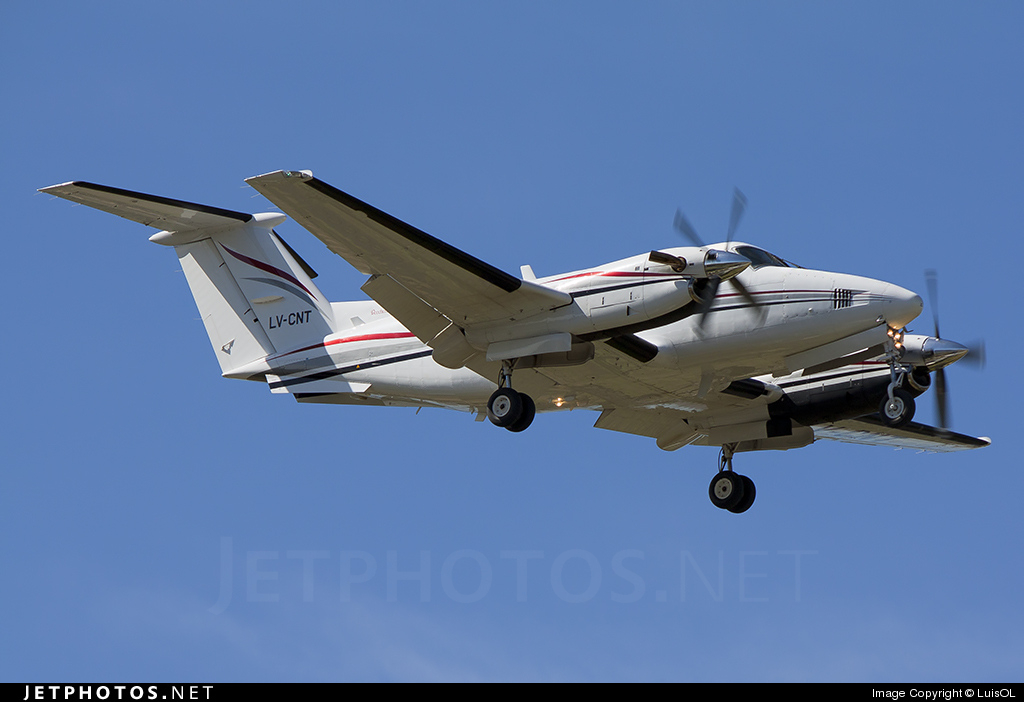
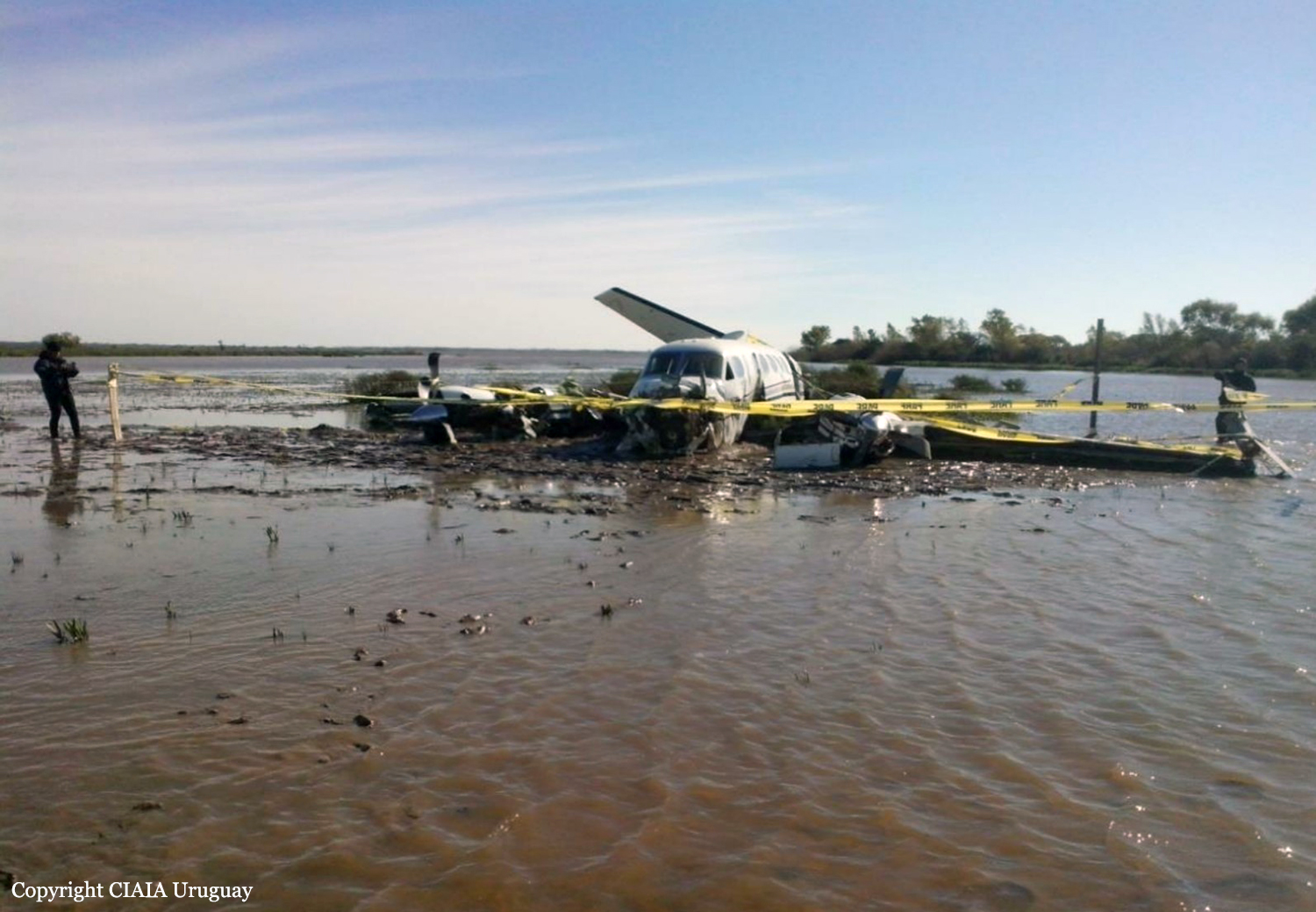

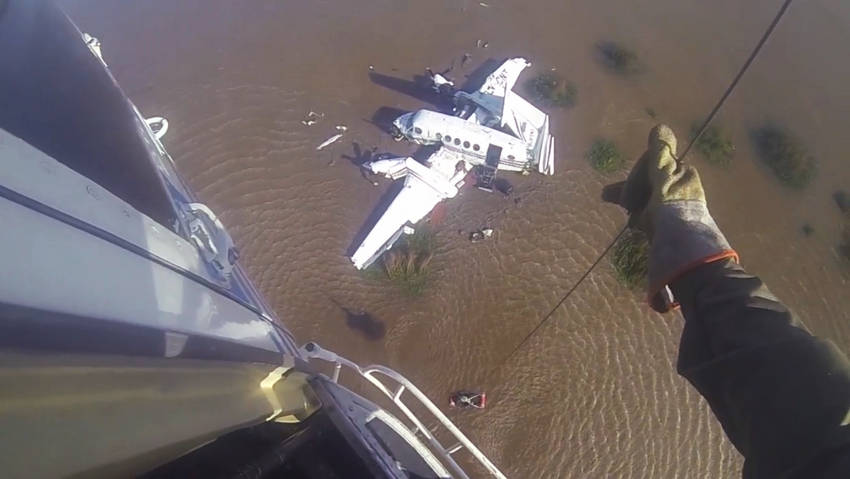
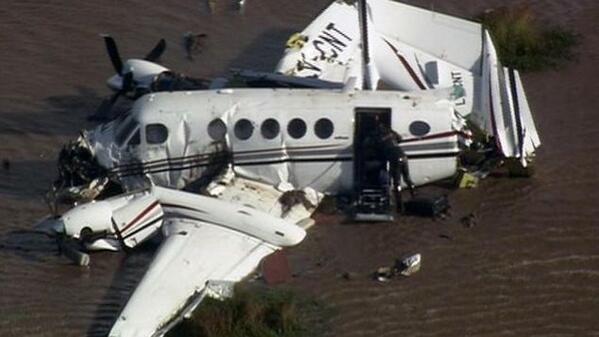
Crash of a Beechcraft B200 Super King Air in Chandigarh
Date & Time:
Mar 27, 2014 at 1139 LT
Registration:
VT-HRA
Survivors:
Yes
Schedule:
Chandigarh – New Delhi
MSN:
BB-1906
YOM:
2005
Crew on board:
2
Crew fatalities:
Pax on board:
8
Pax fatalities:
Other fatalities:
Total fatalities:
0
Captain / Total hours on type:
2165.00
Copilot / Total hours on type:
1383
Aircraft flight hours:
2010
Circumstances:
On 25.03.2014, the operator received the travel programme for 27.3.2014, of Hon'ble Governor of Haryana from Chandigarh to Delhi. On 26.3.2014, the operations department took the flight clearances and filed the passenger manifest with the ATC and other concerned agencies. The flight plan was filed by a CPL holder, who is working as flight dispatcher with the Government of Haryana. The departure on 27.3.2014 was fixed at 1130 hrs. The cockpit crew reported at 1045 hrs for the flight. Pre flight medical examination including the breath analyzer test was carried out at 1100 hrs. The breath analyzer test for both the cockpit crew members was negative. Pre flight briefing among the crew members was carried out by using the documents prepared by the flight dispatcher. The aircraft was taxied under its own power from Haryana Government Hangar to bay no. D-2 in front of ATC building. No abnormality was observed or reported on the aircraft during this taxiing. The engines were shut down for passenger embarkation. As per the passenger manifest, in addition to the pilot and co-pilot there were 8 passengers. The baggage on board was approx. 50 lbs. There was 2100 lbs. of fuel on board. After boarding of the passengers, the aircraft engines were started at 1130 hrs. The aircraft was cleared for departure abeam „D‟ link. The aircraft was taxied out via taxiway „D‟. After ATC departure clearance the aircraft was lined up for take-off. On clearance from ATC the take off roll was initiated and all the parameters were found normal. As per the pilot just before getting airborne some stiffness was found in rudder control as is felt in yaw damper engagement. The aircraft then pulled slightly to the left which as per the Commander was controllable. As per the pilot, the rotation was initiated at 98 knots. As per the DATCO the aircraft had lifted up to 10-15 feet AGL. The Commander has stated that after lift-off, immediately the left rudder got locked in forward position resulting in the aircraft yawing and rolling to left. The pilots tried to control it with right bank but the aircraft could not be controlled. Within 3-4 seconds of getting airborne the aircraft impacted the ground in left bank attitude. The initial impact was on pucca (tar road) and the wing has taken the first impact loads with lower surface metallic surface rubbing and screeching on ground. After the aircraft came to final halt, the co-pilot opened the door and evacuation was carried out. There was no injury to any of the occupants. The engine conditions lever could not be brought back as these were stuck. The throttle and pitch levers were retarded. The fuel shut off valves were closed. Battery and avionics were put off. Friction lock nuts were found loose. As per the Commander, after ensuring safety of passengers he had gone to cockpit to confirm that all switches were „off‟. At that time he has loosened the friction lock nuts to bring back the condition lever and throttle lever. However even after loosening the nut it was not possible to bring back these levers. Fire fighting vehicles were activated by pressing crash bell and primary alarm. Hand held RT set was used to announce the crash. RCFF vehicles proceeded to the site via runway and reported all the 10 personnel are safe and out of the disabled aircraft. Water and complementary agents (foam and dry chemical powder) were used. After fire was extinguished, the Fire Fighting vehicles reported back at crash bay except one CFT which was held at crash site under instruction of COO. The aircraft was substantially damaged. There was no fire barring burning of small patch of grass due coming in contact with the hot surfaces and oil. There was no injury to any of the occupants. The accident occurred in day light conditions.
Probable cause:
The accident occurred due to stalling of left wing of the aircraft at a very low height.
The contributory factors were:
- Failure on the part of the crew to effectively put off the yaw damp so as to release the rudder stiffness as per the emergency checklist.
- Checklist not being carried out by the crew members.
- Not putting off the Rudder Boost.
- Speeds call outs not made by co-pilot.
- Not abandoning the take-off at lower speed (before V1).
- Failure of CRM in the cockpit in case of emergency.
- Early rotation and haste to take-off.
The contributory factors were:
- Failure on the part of the crew to effectively put off the yaw damp so as to release the rudder stiffness as per the emergency checklist.
- Checklist not being carried out by the crew members.
- Not putting off the Rudder Boost.
- Speeds call outs not made by co-pilot.
- Not abandoning the take-off at lower speed (before V1).
- Failure of CRM in the cockpit in case of emergency.
- Early rotation and haste to take-off.
Final Report:
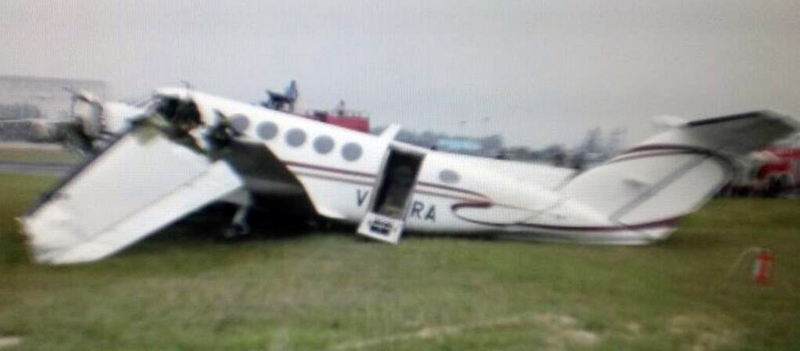
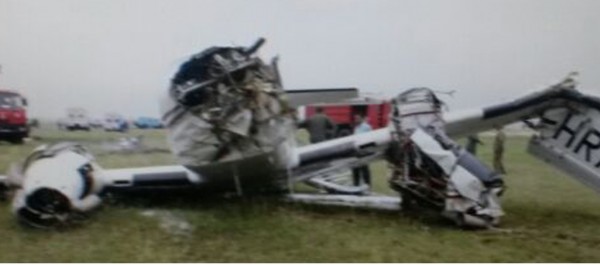
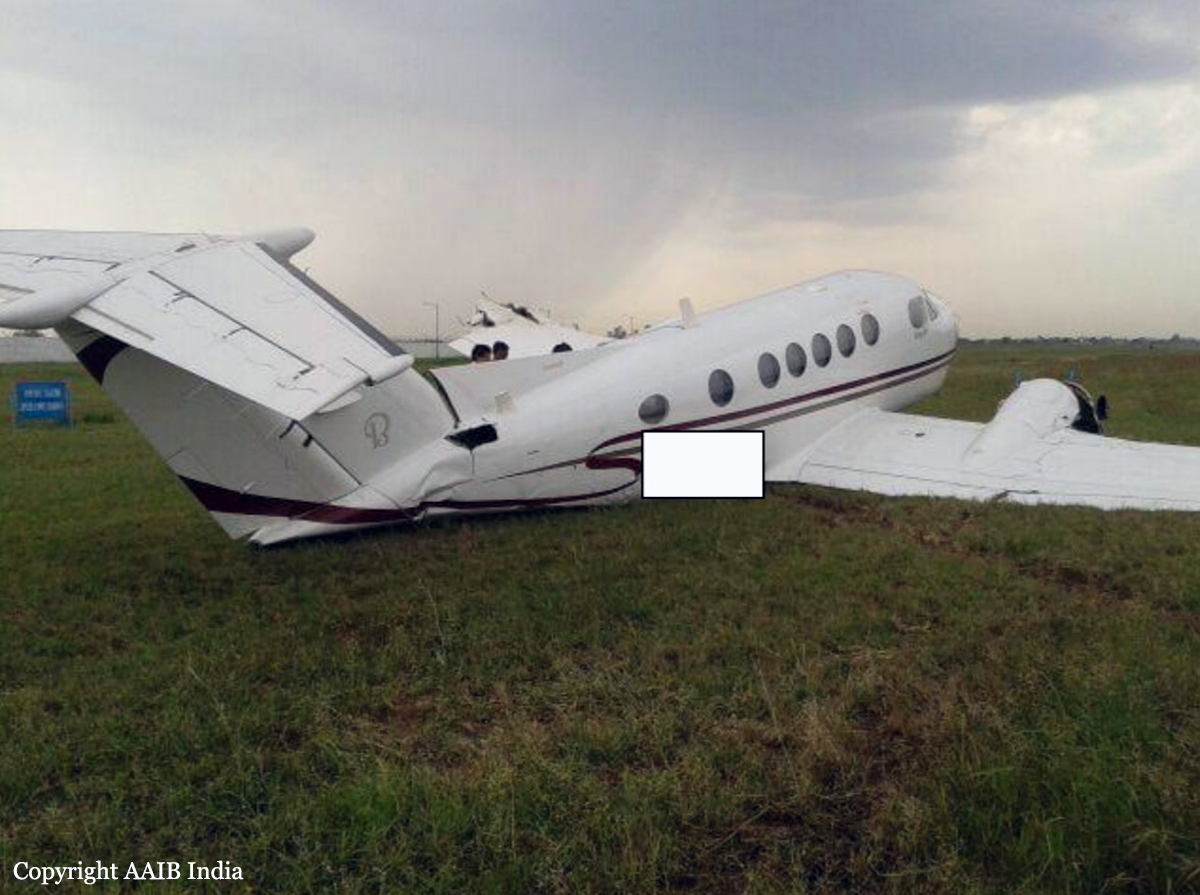
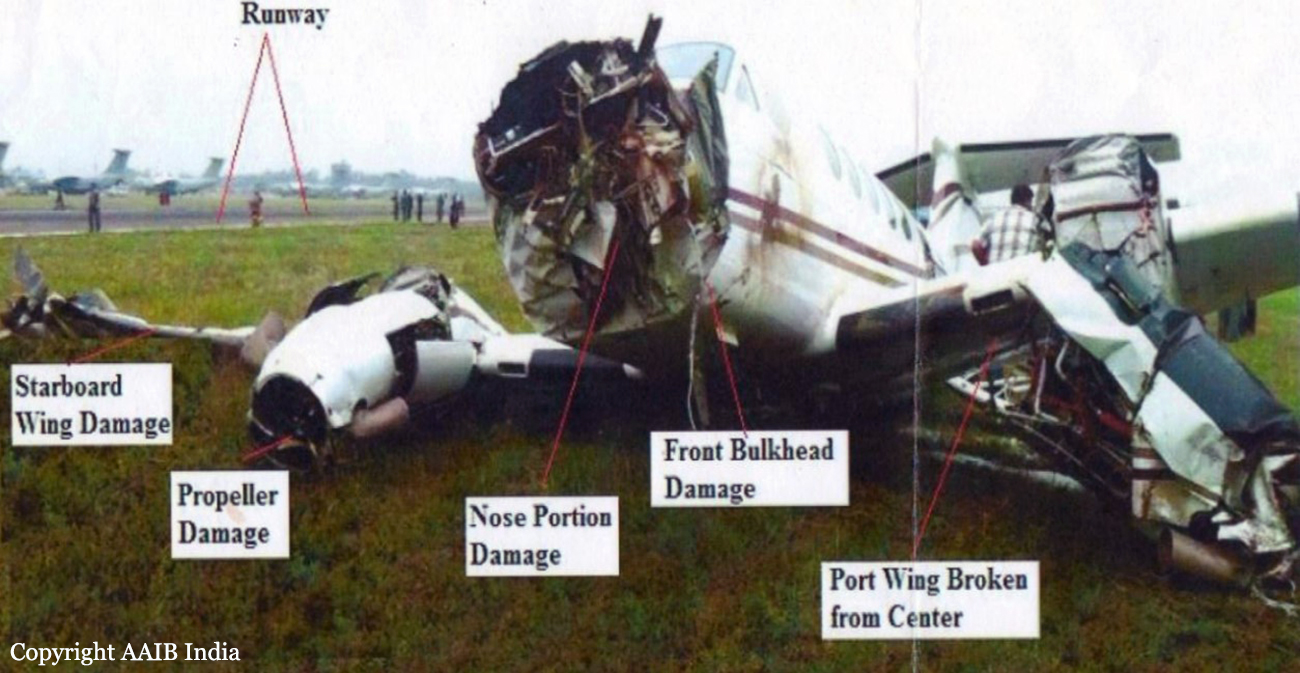
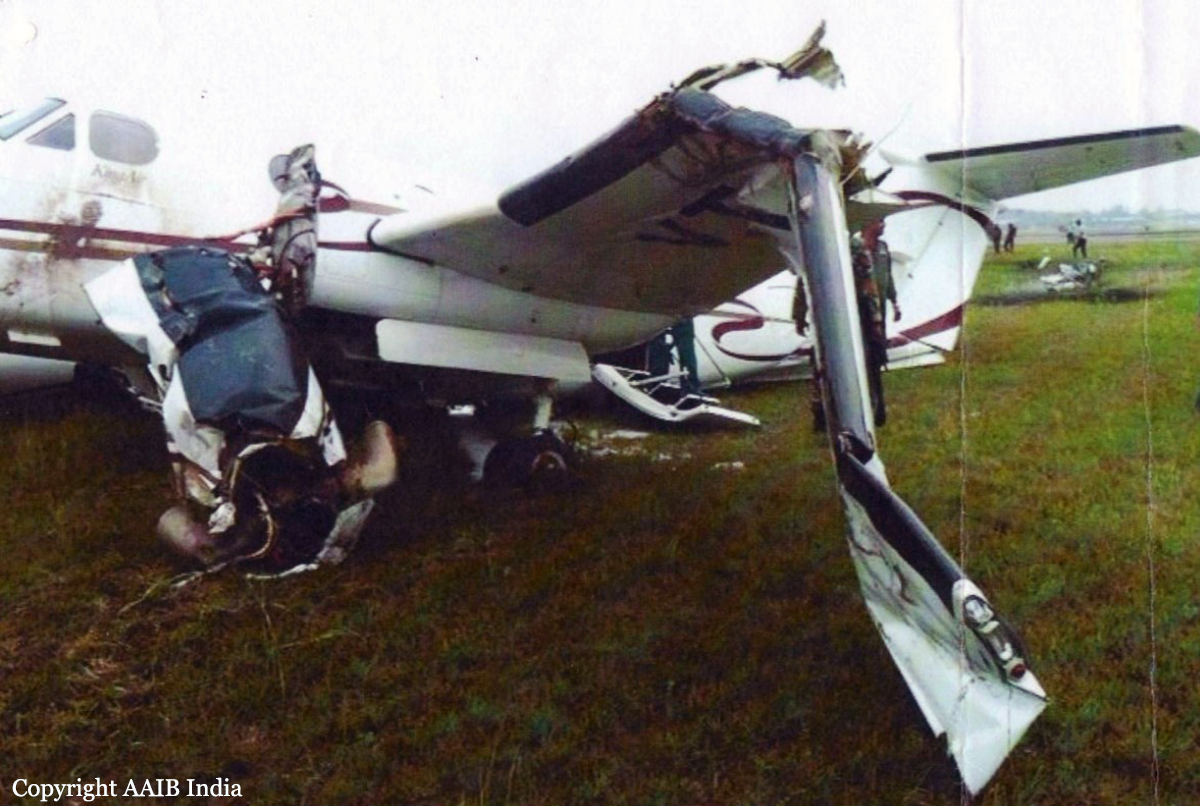
Crash of a Beechcraft 200C Super King Air in Lake Manyara
Date & Time:
Aug 22, 2013
Registration:
5H-TZW
Survivors:
Yes
Schedule:
Bukoba - Zanzibar - Dar es-Salaam
MSN:
BL-17
YOM:
1981
Crew on board:
1
Crew fatalities:
Pax on board:
6
Pax fatalities:
Other fatalities:
Total fatalities:
0
Circumstances:
En route to Zanzibar, while cruising at an altitude of 21,000 feet, the right engine failed. The pilot decided to divert to Arusha Airport when few minutes later, while passing 16,000 feet on descent, the left engine failed as well. The pilot attempted to ditch the aircraft into Lake Manyara. The aircraft belly landed and came to rest in shallow water, bent in two. All seven occupants were rescued by fishermen and the aircraft was damaged beyond repair.
